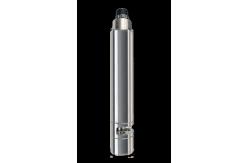Water Quality Monitoring COD Sensor No Reagents No Pollution
|
KCD602 Online COD Sensor No Reagents, No Pollution, More Economical And Environmental Protection Small Size1.Working PrincipleMany organic substances dissolved in water absorb ultraviolet light. Therefore, by measuring the absorption of these organic substances by ultraviolet light at a wavelength of 254 nm, the total amount of dissolved organic pollutants in water can be accurately measured. The KCD602 online COD sensor uses two light sources, one 254 nm ultraviolet light and one 365 nm ultraviolet reference light, which can automatically compensate the optical path attenuation and eliminate the interference of the granular suspended matter enamel to a certain extent, thus achieving more stable and reliable.
2.Feature
3.Technical Specifications4.Dimensional Drawing
5.Installation and Electrical Connection5.1 InstallationWhen the sensor is attached, the sensor caused by water flow should be prevented from hitting the wall or other water conservancy facilities. If the water flow is very urgent, fix the sensor.
Install the sensor to a depth of no more than 2 meters from the water surface.
Taking into account the fluctuation of the water level, the sensor is immersed in the lowest possible water level below 30 cm.
The sensor is placed in a position where there are no bubbles in the water.
5.2 Electrical Connection
After wiring is completed, it should be carefully checked to avoid damage to the sensor caused by incorrect wiring. Cable specification:Considering that the cable is immersed in water (including sea water) for a long time or exposed to the air, the cable has a certain degree of corrosion resistance. The outer diameter of the cable is Φ6 mm and all interfaces are waterproof.
6.Maintenance6.1 Maintenance Schedule and Method6.1.1 Maintenance Schedule To ensure accurate measurements, cleaning is important, and regular sensor cleaning helps data stability.
Note: The maintenance frequency in the above table is only a recommendation. Please maintain the sensor according to the actual usage of the sensor. 6.1.2 Maintenance Method 1)Sensor outer surface: Clean the outer surface of the sensor with tap water. If there is still debris left, wipe it with a soft, damp cloth. For some stubborn dirt, add some household washing liquid to the tap water to clean it. 2)Check the cable of the sensor: the cable should not be tightened during normal operation. Otherwise, the cable inside the cable may be broken, causing the sensor to malfunction. 3) Check if the sensor's measurement window is dirty and the cleaning brush is normal. 4) Check the sensor's cleaning brush for damage. 5) For 18 months of continuous use, it is necessary to return to the factory to replace the dynamic sealing device. 1.3 Precautions The probe contains sensitive optical and electronic components. Make sure the probe is not subject to severe mechanical shock. There are no parts inside the probe that require user maintenance. 6.2 Sensor Calibration6.2.1 Turbidity Calibration: 1) Zero calibration: Take a small amount of turbidity liquid from a large beaker and place the sensor vertically in the solution. After 3 to 5 minutes, the value is stabilized and then zero calibration. The instructions refer to the appendix. 2) Slope calibration: Place the sensor in a solution and place it in a 100 NTU standard solution. After 3 to 5 minutes, the slope is calibrated after the value is stabilized. The instructions refer to the appendix. 6.2.2 COD Calibration: 1) KHP(Potassium hydrogen phthalate , C8H5KO4) , As a commonly used stain for environmental research, it can be used for COD calibration. 2) Preparation of standard solution a) Accurately weigh 0.8503 g of KHP into a 1000 ml flask. Distilled or deionized water and perfused until the highest scale. This solution is a 1000 mg / L COD solution. b) Take 100 ml of this solution into a 1000 ml flask and fill it to the highest mark with distilled or deionized water. After shaking, the COD concentration was 100 mg/L. A solution having a concentration of 5 mg/L was prepared in the same manner. c) The concentrated standard solution (step 2.1) was stored in a black glass vial and stored at low temperature to prevent decomposition. The diluted standard (step 2.2) needs to be used within 24 hours of preparation. 6.2.3 Calibration (2-point calibration) 1) 0~200mg/L calibration Place the sensor in a 5mg/L COD solution and verify that all light paths are submerged under water >2cm with no air bubbles. Perform a zero calibration according to the appendix command. 2) 0~500mg/L calibration Place the sensor in a 20mg/L COD solution and verify that all light paths are submerged under water >2cm with no air bubbles. Perform a zero calibration according to the appendix command. Warning:
6.3 Precautions
6.4 Common Problems and Countermeasures
7.Quality and Service7.1 Quality Assurance
7.2 Accessories and Spare PartsThis product includes:
7.3 After-sales Service CommitmentThe company provides local after-sales service within one year from the date of sale, but does not include damage caused by improper use. If repair or adjustment is required, please return it, but the shipping cost must be conceited. Damaged on the way, the company will repair the damage of the instrument for free.
Contact UsWebsite www.kacise.com
|
|||||||||||||||||||
| Product Tags: CE No Pollution cod sensor No Reagents cod sensor KHP Water Quality cod sensor |
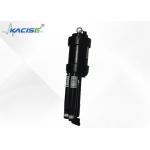
|
KWS-850 On-line Multi-parameter Water Sensor High Accuracy Turbidity Measurement For Wastewater Treatment Plants |
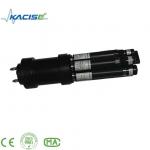
|
Power Consumption 5W 12V KWS-850 Multi-Parameter Water Quality Sensor For Water Monitoring |
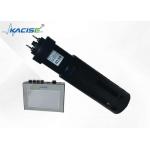
|
Low Maintenance Of The KWS-850 On-line Multi-parameter Water Quality Sensor |
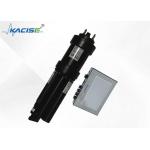
|
Precision KWS-850 On-line Water Turbidity Sensor Water Quality Sensor For Aquaculture |
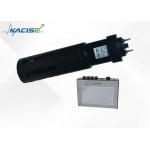
|
The KWS-850 On-line Multi-parameter Water Quality Sensor Can Measure 8 Parameters Simultaneously |
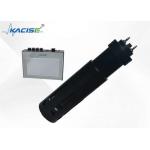
|
The Integrated KWS-850 On-line Multi-parameter Self-cleaning Digital Digital Sensor |

